Best Martial Arts for Self-Defense
When the time comes for you to ward off incoming adversaries, it is essential that you know the best martial arts for self-defense on the streets.

Everyone has had that fantasy: a mugger or assailant of some kind comes at you in a dark alley, and you, trained in the martial arts, use your skills to ward off the attacker in a glorious display of self-defense power. That is the dream. That is the goal.
But the reality is quite different. There are numerous martial arts out there, and not all are built equally. A butterfly knife takes too long to unsheathe. Nunchucks are unwieldy. Challenging an opponent to a Gentleman's Duel with a rapier is a little difficult, as it is typically illegal to wield rapiers nowadays.
But there are ways to fight all the same. Numerous martial arts that can break enemy bones against your knees, knuckles, and feet. When the time comes for you to ward off incoming adversaries, it is essential that you know the best martial arts for self-defense on the streets.
Boxing

Photo by Matheus Ferrero
Sometimes, you don't need to worry about complicated tactics. Sometimes, raising your fists to knock a man down is all you need.
Western boxing may not have a fancy name. It may only incorporate one type of strike - but rest assured, that's all they need. Boxers know how to punch really, really hard. They master the punch, able to strike hard enough to knock people down hard.
But not just punching. Bobbing, weaving, and blocking are important elements of boxing, which leaves the practitioner with a sense of both defensive and offensive skills. Perfect and ideal for taking down any opponent. It is centered around you, leaving you with incredibly powerful and thick muscles that can lead to you knocking anyone on their ass.
Karate

Photo by Jason Briscoe
Karate remains one of the most popular martial arts around, and for good reason. Though stylized, it focused primarily on lateral fighting. In a fight, most often an enemy is going to strike you head on. A jab. A kick. A lunge of the knife.
The trick of karate is to side-step, evade, and then strike when the enemy is open. If they throw a punch, you need take a step to the side, deliver a sharp strike to the enemy's joint, before delivering a sharp strike from the flank to their body.
The benefits here are two-fold. Defense and offense. You can avoid being hurt, and, in your evasion, find a new opening to deliver a secondary follow-up to take the enemy down. To the torso. To the quads. To the skull. But it is important to first negate the adversary's ability to attack. If they can't use their arms, they can't block your strikes.
Karate is a little more technical and calculated than other martial arts, but it remains popular for a reason. Rather than balance offense and defense, it integrates the two into one, smooth tactic.
Muay Thai

Muay Thai is known in some circles as the "art of eight limbs." It is one of the dirty martial arts known for doing whatever it takes to take down the enemy. The more practical, stylized martial arts forms regard it with a degree of skepticism.
But you are here to take names and keep yourself safe. You don't care about style. You care about practicality.
Muay Thai incorporates a lot of clever kicks that can leave an enemy down. You can simply deliver a sharp kick to the jawline, potentially fracturing it or concussing your adversary. Or, you can knock aside his attacking arm, and slam your forehead into your adversary's nose. Or, you can also deliver a sharp elbow to his throat before driving a kick into his solar plexus.
Muay Thai teaches you how to deliver sharp, sudden strikes too fast to either be blocked or evaded. Fancy spins and kicks may be technically more impressive, but they are useless in a real brawl. A round-house kick may look cool, but in the time it takes for you to spin around and deliver a momentum-carried strike into the adversary's head, the enemy can off-set you with a mere punch to the face.
Not with Muay Thai. The asshole will never have a chance.
Aikido
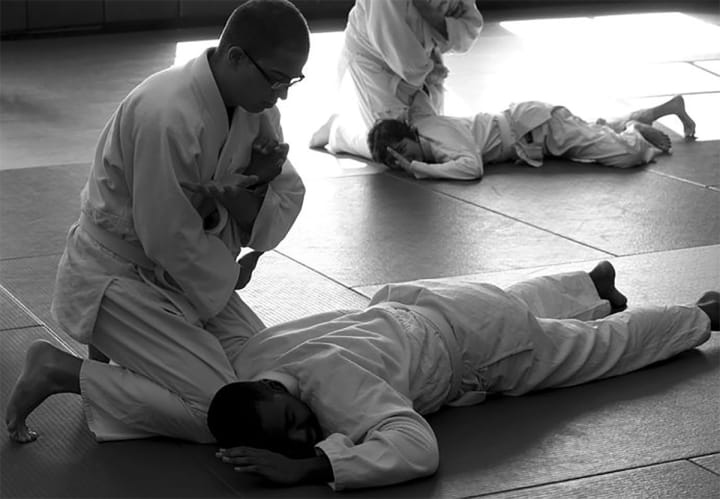
Different from most martial arts, Aikido is all about using your adversary's momentum against him. It focuses less on strikes and blows, and more on literally throwing and twisting your opponent around.
Let's say an opponent draws a knife at you, and lunges in to stab you. With Aikido, you take a step to the side, and, in rhythm with his movements, snatch him by the wrist, twist it around, and send him stumbling away. If you clutch and twist the wrist just right, one of two things can happen. You can either throw him like out of some martial arts movie, or snap his wrist. While throwing someone across the room is far more bad-ass, it's more efficient to break every bone in his hand.
The tactics are easy to learn in theory, but hard to master. While Aikido is entirely defensive, it can be dangerous to use in practical purposes as it does involve you to wait for your opponent to strike you rather than you going into your opponent. A technical art, but an effective one.
Judo

Similar to Aikido, Judo is all about utilizing your opponent's momentum against them. It also is a similarly defensive martial art. The enemy comes at you, and you use their momentum and your bodily strength to send them flying. If an enemy throws a punch, use their momentum and your strength to send them flying face-first into a wall.
However, unlike Aikido, which focuses on breaking an opponent's attack long before they hit the ground, Judo has a lot of ground-fighting tactic to keep the enemy from coming up. By using the opponent's momentum, you can put them into a pin that will keep them from ever rising up again.
In the end, it is up to you which martial art appeals to you. Judo requires more strength, but is all about throwing your opponent around. Aikido is similar, but uses the enemy's momentum purely, and, in turn, is more technical. Should you mess up an element of an Aikido throw, you will be left vulnerable. Judo is simpler, but also requires you to be more powerful. For a weaker physique, Judo is not a good choice.
Freestyle Wrestling
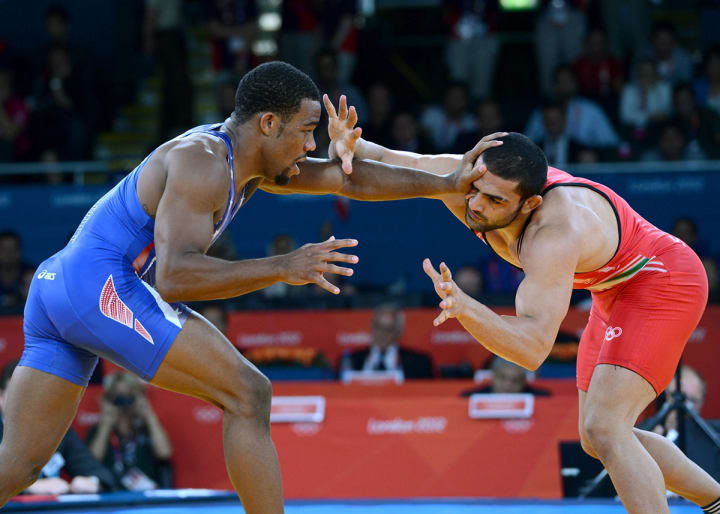
It's less technical, and less graceful. But, for those who are strong and not good at throwing punches or kicks, freestyle wrestling may be incredibly practical. And, you can learn it in high school.
At such a close range, weapons become almost useless. If you can pin an opponent's arms and legs down, then guns and knives no longer matter. You can push an opponent to the ground, and keep them from ever rising again.
The obvious flaw with wrestling, though, is it all depends on physical power and center of gravity. While tactics and technique all play into it, it is difficult to utilize against a physically stronger opponent. Additionally, it requires you to come close to your opponent. If you can't reach them fast enough, you are going nowhere.
However, many other martial arts require the wrestling talents of ground-fighting, or pinning an opponent to the floor.
Wing Chun Kung Fu
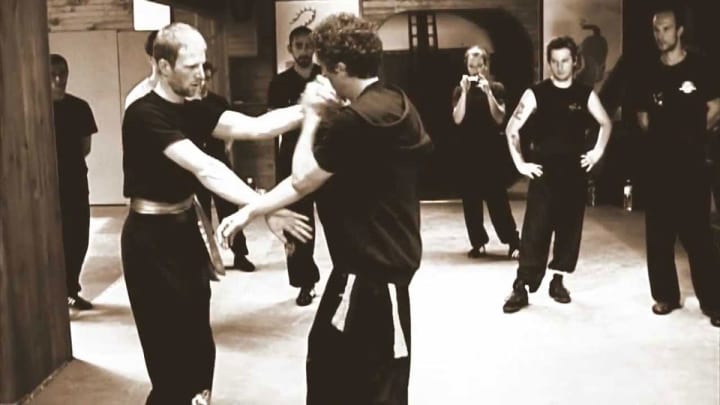
There are multiple varieties of Kung Fu. Wing Chun remains the tactic that the Yip Man taught Bruce Lee. He would later use Wing Chun as the basis for his own martial arts after Bruce Lee found it insufficient to combat a particularly skilled martial artist.
Wing Chun, however, remains an incredibly effective martial art against any normal opponent. In fact, Bruce Lee ended up winning the fight by utilizing Wing Chun's signature strikes: rapid-fire strikes.
Each fist is utilized in combat. When an enemy comes in for the strike, block with one hand, and strike with the other. While most punches use the hips to carry momentum, Wing Chun has the adversary strike from the shoulder, for a faster hit.
Block with one hand, and deliver a sharp blow with the other. Follow through with another strike with the other hand, while readying the other fist to go in with the other. As you strike, you walk into the opponent, carrying the momentum of your body into each strike. It is possible to deliver fifteen punches before the adversary can even recover, assuming said opponent can even rise up after your strikes.
If done right, you can dent a person's ribcage inward before you even need to block the second strike.
For this to work, you need to be close up to the enemy. It works better with shorter practitioners. A woman against a would-be assailant, for example, can take the enemy down hard and fast.
Jeet Kune Do (Bruce Lee's Kung Fu)

Bruce Lee believed the opponent should focus less on anticipation, and more on pure reaction to enemy strikes. A minimalistic, careful strike.
Footwork is important. Bouncing on the feet, moving fast in order to react to any strike. Kicks never rise above the waist, for strikes higher leave the groin vulnerable. Like Wing Chun, fast strikes where the opponent plows into the enemy. The trick, however, is adaptability, which makes it an incredible practical martial art, for it is designed to adapt to any situation.
It incorporates throwing, kicks, strikes, even spinning. But, more than anything, it involves fast paced change of pace, adaptability, and speed. It is at once adaptable, but also incredibly complicated.
Tae-Kwon-Do
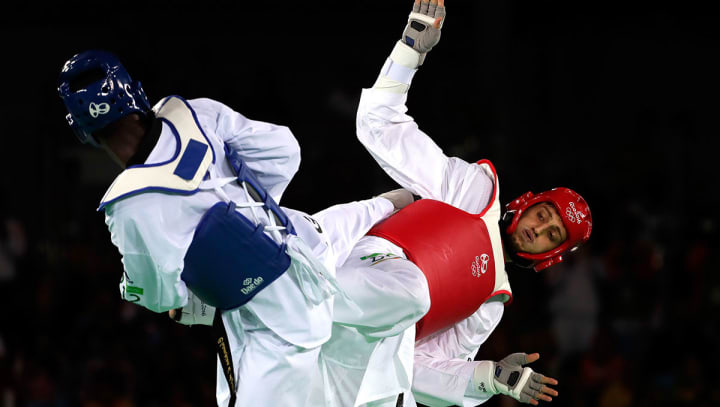
Admittedly, this martial art is sometimes considered too stylized to be practical in a fight. This Korean form is identifiable by its spinning, fast kicks that can knock a person flat on their backs with a single, sharp strike.
There are, however, many real issues with the attack style.
Many martial arts have counter-balances to take a person down who is launching into a spinning kick. You leave yourself vulnerable to any number of strikes that can throw you either off-balance or open to an attack.
However, if you move fast enough, you can strike an enemy down long before he or she ever has a chance to exploit them. Not just that, but there are numerous fist strikes involved with Tae-Kwon-Do that can knock an enemy down before you launch into that kick.
Jiu-Jitsu
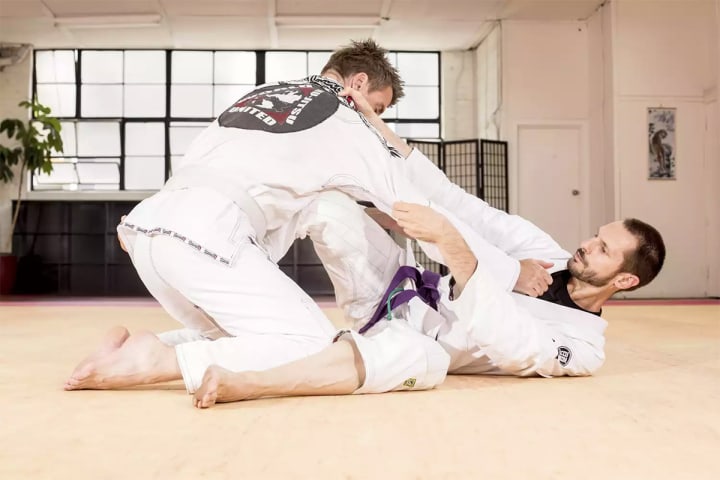
This style is all about working against your enemy, adapting to the strike to use their own center of gravity against them. This attack method is more defensive than offensive, but it should work well.
It incorporates numerous alternative martial art styles into itself. Grappling. Strikes. Joint attacks. All to create a martial art designed to bring the opponent down.
If an opponent strikes, move toward him, go low, and unleash a series of complicated moves. Go for the joints, carry your opponent's momentum with you, and break their attacking joints. If they stab with a knife, duck low, smash their elbow, thrust into their torso, knock their legs out from under them, and knock them over behind you. Preferably, lock their arms so you can break their own arms as they fall.
If your enemy kicks, kick the opposite leg. Break his stance, and then unleash a series of strikes to incapacitate your opponent - viciously and violently.
Brazilian Jiu-Jitsu
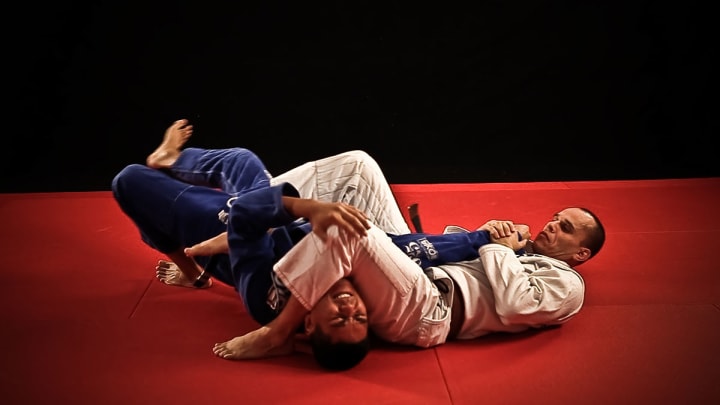
This variation on Jiu-Jutsu teaches many of the same general principles. But there are a few core differences that set the two apart.
One the enemy hits the ground, break them.
Take their limbs, and snap them apart. Keep them from ever getting up again. They can't retaliate with broken arms. They can't rise to attack again if both knees are shattered. The enemy, once down, should not rise again.
This is a practical lesson for any fighter on the street, but also one of the reasons why tournaments shy away from this style. It is a dirty martial art. But it is effective at making sure you protect yourself.
Kendo
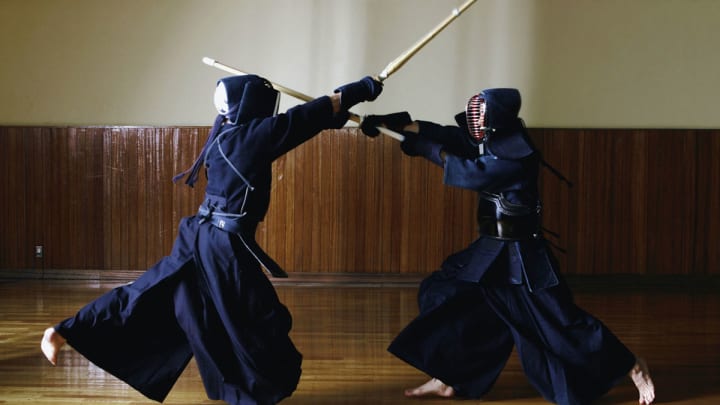
Kendo is a style of fighting that incorporates a sword - be it wooden or steel. It doesn't matter either way, however, since it should be easy to beat someone down with a long sword.
This martial art is problematic in that you need a weapon of sorts in order to use it. However, it cannot be that easy to conceal a long stick like that. Or, better yet, a real sword.
The method in theory is easy. Use the advanced reach of your weapon to deliver catastrophic damage to the opponent. Sometimes, numerous enemies at once.
The only real problem is if the weapon is eliminated. It is good to supplement kendo skills with another martial art, in order to keep fighting even without a weapon--or, worse--with a broken weapon.
Keysi Fighting Method
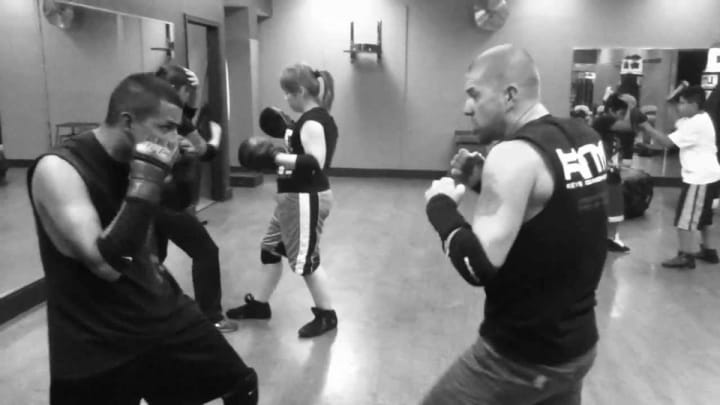
This is the method used in the Christopher Nolan Batman movies. It is designed to fight tons of opponents in close range all around the attacker. And it utilizes extremely close-range fighting.
Elbows. Hammer-fist strikes. Skulls. Body. All the strikes are used in sharp, sudden manners to take an opponent down hard and fast. And not just one opponent, but numerous ones, all at once. The sharp strikes are used to both carry the maximum amount of weight as possible down upon an opponent in the shortest range as possible.
The tactic is used to fight not only one, but in actuality twenty or more opponents, fighting them all off with, again, minimal reach.
Krav Maga

The most violent of all martial arts, this was developed by the Israeli military as the ideal martial arts. Combining tons tactics, from Brazilian Jiu-Jitsu to Western Boxing, Krav Maga's most noteworthy quality, aside from turning the whole body, elbows included, as a weapon, is the use of "bursting."
To "burst," one must take the Wing Chun tactic of blocking with one hand and striking with the other to the next level by doing both at once. Block and strike. At once. The collected attack will be enough to take the person down...and hard.
This brutal style is hard to master and hard to learn, but, should you devote yourself to the art, there is no other martial art more effective at taking an opponent down, and keeping them down. In theory, forever.
Firearm Training

It remains the most wide-spread martial art for a reason.
Yes, guns are not the most practical form of self-defense. In close range, a knife or fists can do more damage. But, given the distance, it might be the most effective way to take down an assailant.
But, as with all martial arts, there are flaws. The most important thing is you have to aim from a distance. There are ways to steady your gun. But you have to aim and fire fast, at an opponent who can just as easily strike you back. By the time you fire, your opponent could weave out of the way, or even come close enough to you to knock the weapon aside.
But, regardless, one shot to the heart or head can take an enemy down. And they won't get up ever again.
About the Creator
Anthony Gramuglia
Obsessive writer fueled by espresso and drive. Into speculative fiction, old books, and long walks. Follow me at twitter.com/AGramuglia






Comments
There are no comments for this story
Be the first to respond and start the conversation.